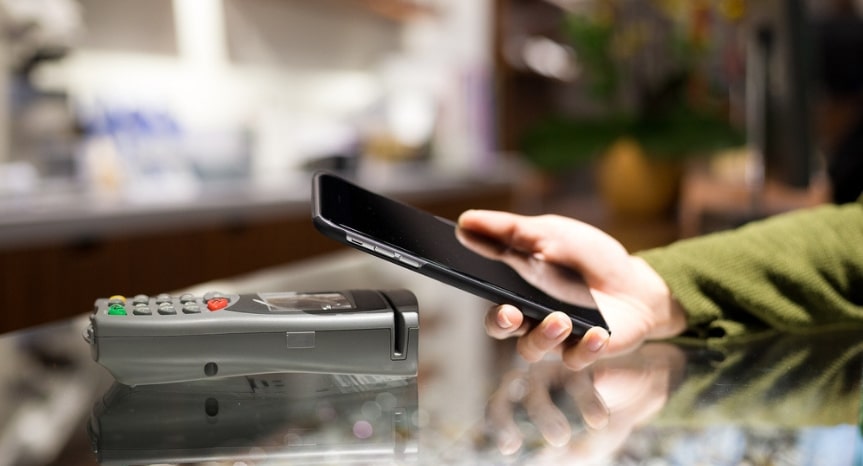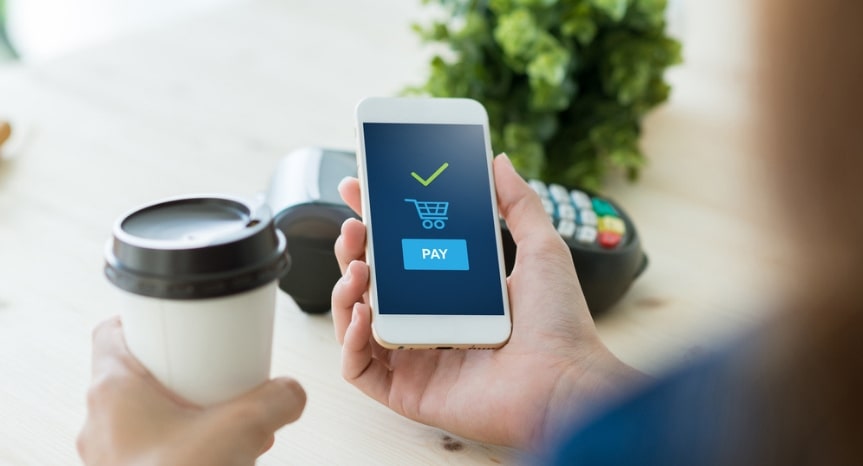Mobile Payments – Way of the Future or a Fad of the Digital Age?

Are we moving towards a world where retailers may one day say “We don’t take cash”? As mobile payments and cashless transactions see new innovations with every passing day, businesses have to adapt to these changes and meet customer requirements. Open banking has further fueled the transformation of payment systems. Right now, in the UK, the volume of cash payments has been reduced to only 34%. There are even certain shops in London that have gone completely cashless. The impetus claimed for this change, primarily, is security. The rise and sophistication in internet frauds have led both banks and merchants to adopt more secure payment channels. With advanced methods of fraud protection including identity verification and transaction monitoring, cashless payments are now considered a more feasible method for accepting payments.
Is Cashless Economy a Possibility? – Mobile Payments
As consumers also become accustomed to mobile transactions, companies may reach the point where sustaining the frameworks for cash payments may become expensive or even unaffordable. Analysts go so far as to say that as branchless banking becomes more common and banking charges increase, merchants may migrate towards mobile payments before consumers get the chance to forgo cash altogether. This could potentially have dire circumstances for the millions of underbanked individuals and institutions. It can lead to an increase in financial exclusion and exploitation of people who do not have access to advanced banking systems.
However, the situation may not be as dire as it is made out to be. There are over 500 billion banknotes and trillions of coins in circulation in the global economy. Given the number of people and businesses that do not have access to proper banks, let alone advanced payment systems, an entirely cashless marketplace is still hard to comprehend.
Moreover, another factor to consider here is the adaptation of remote payment technology. Merchants play a crucial role in the implementation of advanced payment systems. The dilemma would be dizzying as consumers may only switch to mobile transactions if the method has been implemented widely enough by business owners. Contrarily, merchants can be hesitant to spend on systems that are not yet used by a significant number of customers. However, a seamless payment method and shorter ques on point of sale terminals may encourage both to adopt mobile transactions.

Drawbacks in Mobile Payment Systems
As online payment channels are linked to the internet, consumers are increasingly becoming concerned about data privacy. Each and every transaction made through these systems is recorded electronically, giving rise to concerns about who has access to all such data and how effectively is it secured.
Adding to this is the fact that most banks tend to have systems in place that are outdated, even primitive. Such technology is vulnerable to breaches and inefficiencies. As cybercriminals tend to look for weaknesses in an IT structure, online payment systems tend to be unsecured. They are also more prone to frauds like identity theft and CNP and data breaches.
However, advanced fraud protection systems are leveraging advanced technologies like AI, big data and predictive analytics. Systems like digital ID verification, facial recognition and monitoring tools have made it easier to detect and prevent fraud for businesses and banking institutions.
Another drawback is that mobile payment can further isolate individuals who do not have access to financial services. This will eventually lead to the financial exclusion of underbanked individuals and institutions. To address this, the financial sector has to come up with systems that are focused on providing financial services to such individuals.
Mobile Payments – A Way to the Future
We currently reside in a world where financial crimes like money laundering, tax evasion, bribery and corruption have become increasingly complicated. With this increased sophistication, financial regulators have increased compliance and regulatory requirements on banking institutions. As cash transactions tend to be anonymous and untraceable, they have a higher chance of being linked to illicit activities. Mobile transactions, on the other hand, can be traced and have proper trails that can lead to the source. In certain cases, the process may be complicated but can eventually be tracked to the original owner of the funds.
Some may say that remote payments have a higher risk of being defrauded by cybercriminals. However, with advanced AI and machine learning tools, mobile payment methods have been made more secure than ever before. Online payment channels are now protected through tools like biometric authentication via fingerprints and facial recognition. Advanced transaction monitoring algorithms and online identity verification are also being used to make payment channels increasingly secure.
Major market players including Google, Apple, Facebook and Paypal have also entered the market for remote payments. Apple Card is one of the most recent players in this regard. Launching in the summer this year, the payment system promises a comprehensive and clear analysis of your spending. Paypal is now using machine learning algorithms to predict user behaviour, that can help them detect suspicious activity in their transactions.

Secure Mobile Payment Systems
As remote payment systems are becoming a standard across businesses and banks, the focus should be on making them secure. End-to-end encryption and transaction monitoring systems can be implemented in order to alert businesses and customers of fraudulent transactions. Retailers may also consider real-time fraud detection through digital KYC verification. KYC as a service can not only detect fraud instantaneously but can also improve the efficiency of the purchase process. Customer identity verification through online document verification and facial recognition can ensure secure payment systems for businesses.
Regardless of whether the future may hold completely cashless payment systems or not, efforts must be made to make the existing systems more advanced and secure. In addition to that, structural changes must be brought to ensure financial inclusion of the underbanked. Systems are needed to include such individuals that do not have access to technology or resources.










